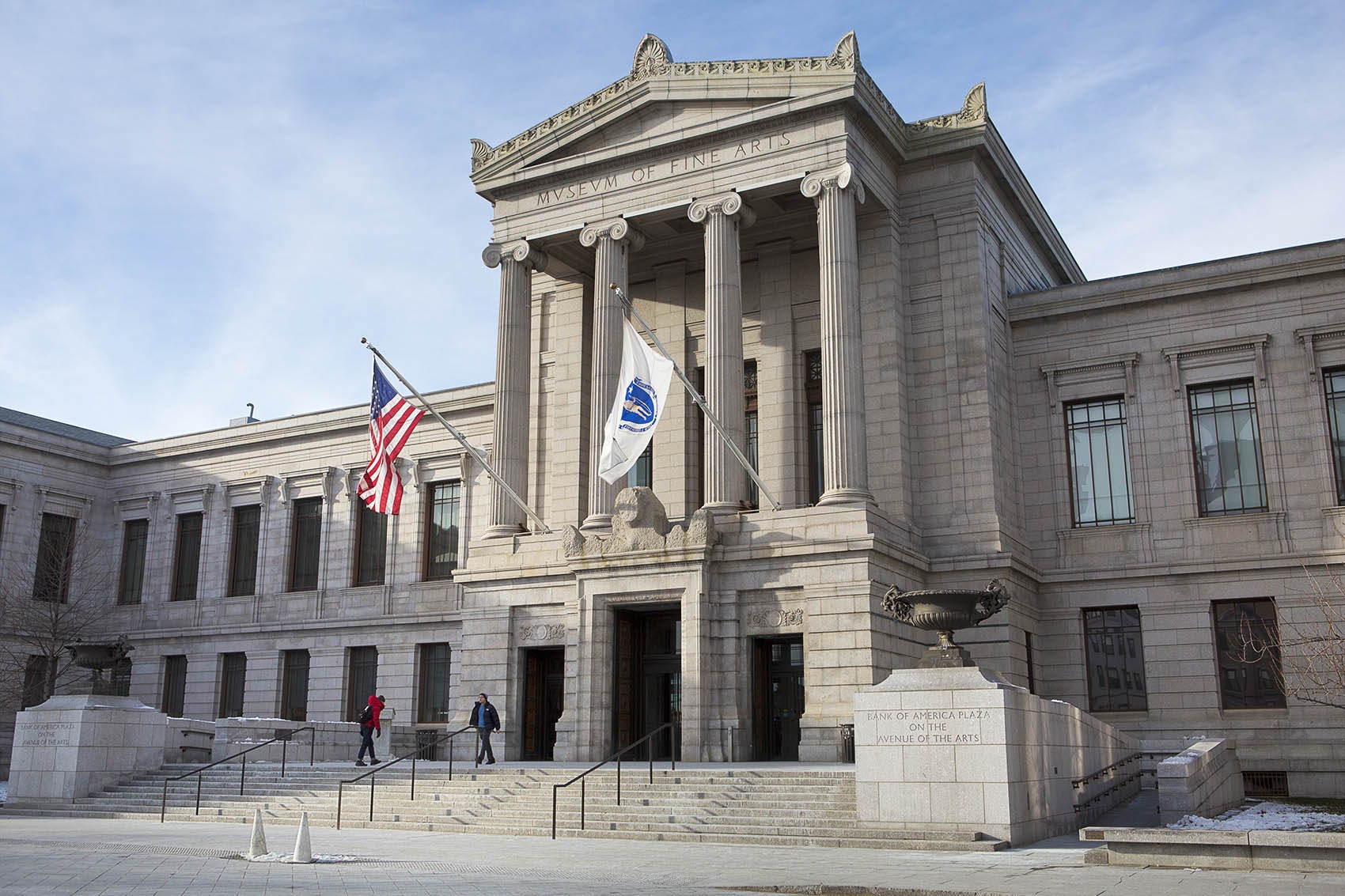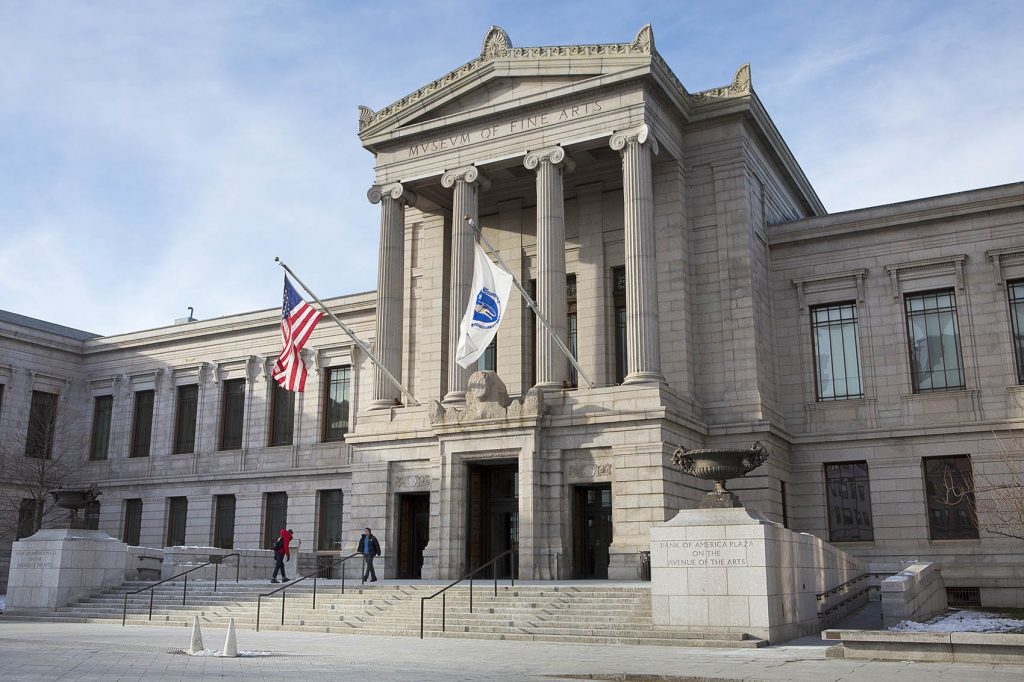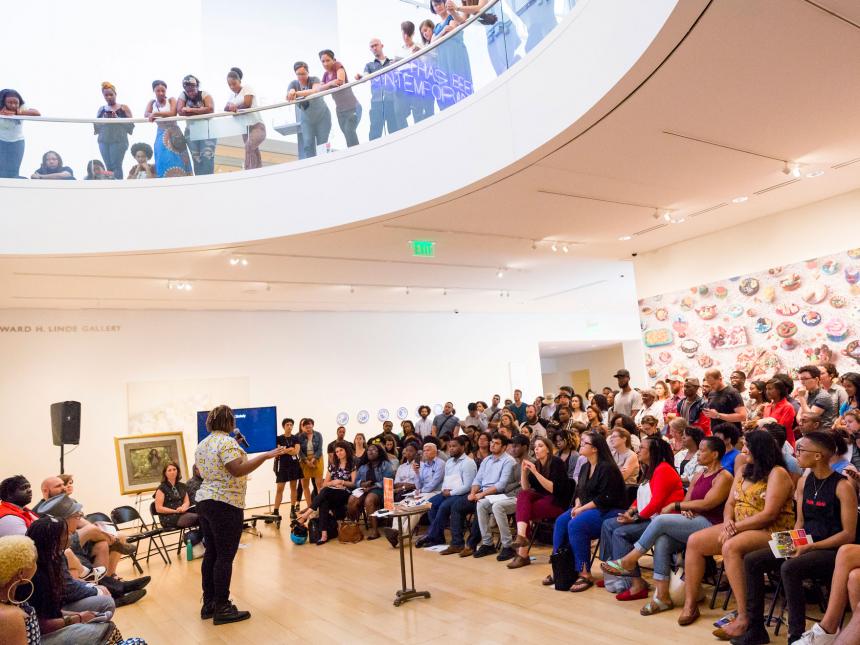Diversity and Inclusivity: How the Boston MFA is Promoting Change

Having grown up going to museums, it would surprise me when others would not enjoy going to museums as much as I did. Many times, I would attribute such disinterest to boredom, thinking that they just never learned how to have fun in a museum. I had never considered that perhaps some people did not like to go to museums because they felt such places were not there for them; that they weren’t welcome.
Such ideas were brought to the forefront of my mind when I was assigned to read the essay “The Art Museum and the Pressures of Society” by Robert Coles for a class. Coles was a resident in child psychiatry at the Children’s Hospital in Boston. In the essay, Coles reflects upon some of the youths he worked with during his residency. One youth, a black child ten years of age, talked about going to the Boston Museum of Fine Arts (MFA) with his school because the teachers wanted to be sure that he “got his culture” (191). He did not understand what that meant. What he did understand was that he was living in a ghetto tenement building surrounded by pealing wallpaper and not surrounded by the beautiful things of the museum. Later in the essay, Coles recalls a statement made by the boy’s father: “Maybe I could go to see a lot of pictures in the museum, like my boy did. Maybe I’d want to keep coming back: look at a picture on each visit. But there’s no use going there. It’s not the place for me; I know that” (196).1

While Cole’s essay was written 75 years ago, its sentiments are still relevant today. In 2017, the MFA created a three-year strategic plan to increase the diversity of the institution which included the creation of “a warmer welcome, greater sense of belonging, and a deeper engagement with art.” Whatever its best intentions, its attempts to create a more welcoming atmosphere fell through in May of 2019 when a group of students from the Helen Y. Davis Leadership Academy experienced racial profiling and insults from museum staff and other visitors during their visit to the MFA (further details regarding the incident can be found in an article by Antonia Noori Farzan and Herman Wong for The Washington Post). On its website, the MFA apologized, stating that they “deeply regret any interactions that led to this outcome and are committed to being a place where all people trust that they will feel safe and treated with respect.”
In response to recent protests after the killing of George Floyd, the Ann and Graham Gund Director of the MFA, Matthew Teitelbaum, sent an email (a copy of which can be found on its website) stating that “the killing of George Floyd, and many others before him, is intolerable. It is unjust.” He also acknowledges that it is “past time to recognize that the usual commitments to change are not enough” and that the MFA has more work to do to become a better institution. Some of its plans for change which Teitelbaum mentioned in the email includes, but is not limited to a commitment to:
continue to diversify staff, management, and board governance to represent all of Boston and report regularly on our progress to hold ourselves publicly accountable; continue to diversify programming to recognize the voices and views of many and celebrate art in many forms; give all staff the training and learning opportunities so they can understand and support the necessary changes; commit transparently to our Community Engagement Plan that creates a presence for the MFA in collaboration with communities across Boston, including our commitment to reconciliation with the Davis Leadership Academy students and community.
MFa Director, Matthew Teitelbaum
After reading the email, I was curious to know more about these changes and what they might look like and had the opportunity to speak with three MFA staff members: Brooke DiGiovanni Evans, the Interim Director of Learning, Dalia Linssen, the Head of Academic Engagement, and Nadia Harden, the Community Engagement Manager. They graciously agreed to answer some of my questions regarding some of the changes to which Director Teitelbaum referred. DiGiovanni Evans spoke about the Idea Task Force which was organized to promote internal discussion among the staff about ongoing issues. The task force allows different members of staff to bring their own knowledge and experiences to the table. Along a similar vein, Harden discussed the Table of Voices program which seeks to more broadly define what it means to be an expert. Within the program they ask not only what story is being told but also who has the right to tell it. Another program Harden discussed was City Talks which is designed to promote discussion on a variety of issues in Boston and relating them to art. Linssen takes similar ideas to a broader community by speaking with college students, explaining the importance of teaching the students how to use art for interdisciplinary learning.

Another avenue through which the MFA has strived to promote inclusivity and equitability is by investing resources in interns. Harden discussed a program called Curatorial Study Hall, developed in partnership with Becoming a Man and The BASE. Through this program, high school sophomores and juniors are given the skills and resources to create their own exhibition. Their latest exhibition, Black Histories Black Futures, highlights black artists in the MFA’s collection.
Many of these programs have been developing at the MFA over a long period of time, responding to a variety of needs within the Boston community. While it is fantastic that there are so many programs available, I was curious to know how the museum draws individuals to the museum who may not be inclined to enter in the first place. How can those individuals be made to feel welcome? Harden answered by first articulating that there is no one-size-fits-all strategy, explaining that there are a variety of reasons why someone might not want to go to the museum. Interestingly, Harden also said that sometimes all it takes is a simple invitation. Linssen agreed and added the comment that museums are considered one of the most trusted institutions and therefore there is an obligation to uphold that ideology. This made me consider how the black father in Coles’ essay might feel differently about museums if someone were to actively invite him. What if he were made to feel that a museum was not only a place where he could go, but a place where people wanted him to go?
I am looking forward to the reopening of the Boston Museum of Fine Arts. I hope that when I walk through those doors, I will find myself surrounded by diversity. I want to see others enjoying art in a place where they feel not only safe but accepted. As I move forward along my own career path within the museum field, I hope to look back on the MFA as an example of how to listen to one’s community and how to promote positive change. In the meantime, I must do what I can as a visitor to make the museum more inclusive. Perhaps the next time I visit I will be accompanied by someone new, someone I will have invited to share my love of museums.
References:
- Coles, Robert. “The Art Museum and the Pressures of Society.” Excerpt from On Understanding Art Museums, edited by Sherman Lee, 185-202. Englewood Cliffs, NJ: Prentice-Hall Inc., 1975.